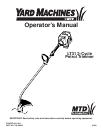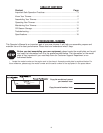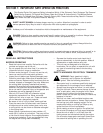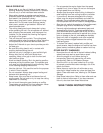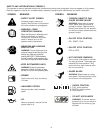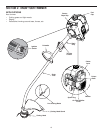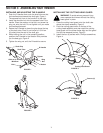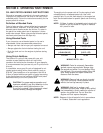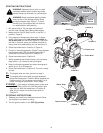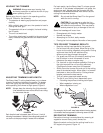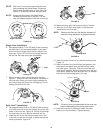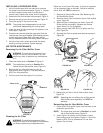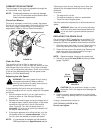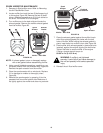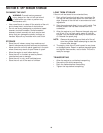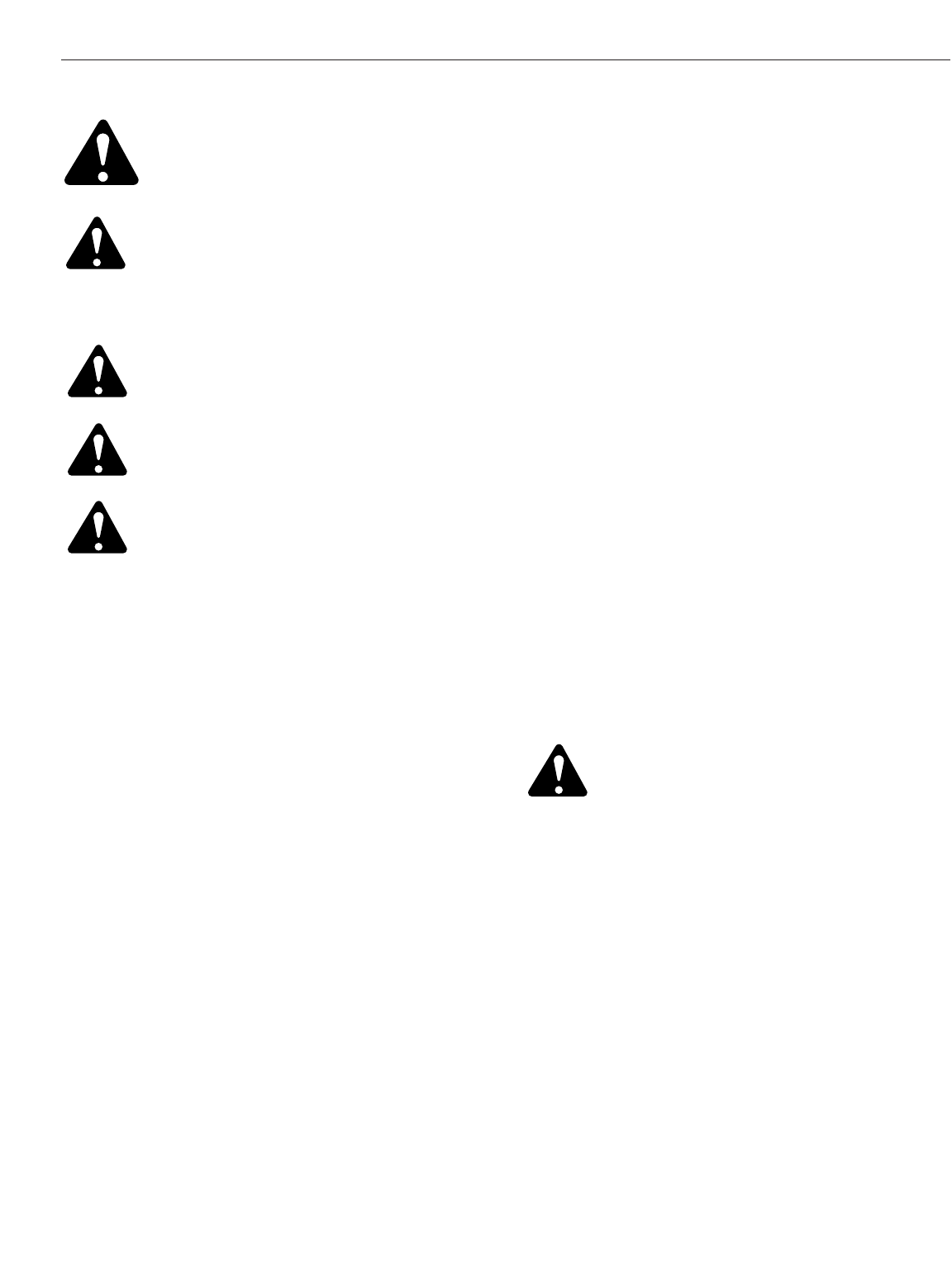
3
This Symbol Points Out Important Safety Information Which, If Not Followed, Could Endanger The Personal
Safety And/or Property Of Yourself And Others. Read And Follow All Instructions In This Manual Before
Attempting To Operate Your Cultivator. FailureTo Comply With These Instructions May Result In Personal
Injury. When You See This Symbol–Heed Its Warning.
SAFETY ALERT SYMBOL: Indicates danger, warning, or caution. Attention is required in order to avoid
serious personal injury. May be used in conjunction with other symbols or pictographs.
NOTE: Advises you of information or instructions vital to the operation or maintenance of the equipment.
DANGER: Failure to obey a safety warning will result in serious injury to yourself or to others. Always follow
the safety precautions to reduce the risk of fire, electric shock, and personal injury.
WARNING: Failure to obey a safety warning can result in injury to yourself and others. Always follow the
safety precautions to reduce the risk of fire, electric shock, and personal injury.
CAUTION: Failure to obey a safety warning may result in property damage or personal injury to yourself or to
others. Always follow the safety precautions to reduce the risk of fire, electric shock, and personal injury.
READ ALL INSTRUCTIONS
BEFORE OPERATING
• Read the instructions carefully. Be familiar with the
controls and proper use of the unit.
• Do not operate this unit when tired, ill or under the
influence of alcohol, drugs or medication.
• Children under the age of 15 must not use the unit;
teens can use the unit under adult guidance.
• Inspect the unit before use. Replace damaged parts.
Check for petrol leaks. Make sure all fasteners are in
place and secure. Replace cutting head parts that are
cracked, chipped, or damaged in any way. Make sure
the cutting head is properly installed and securely
fastened. Be sure the cutting head guard is properly
attached, and positioned as recommended. Failure to
do so can result in personal injury to the operator and
bystanders, as well as damage to the unit.
• Use only 2.03 mm (0.080 inch) diameter original
equipment replacement line. Never use metal-
reinforced line, wire, or rope, etc. These can break
off and become a dangerous projectile.
• Be aware of risk of injury to head, hands and feet.
•Clear the area to be cut before each use. Remove
all objects such as rocks, broken glass, nails, wire
or string which can be thrown or become entangled
in the cutting head.
• Keep children, bystanders and pets outside a 15
meter (50 ft.) radius, at a minimum. They may still be
at risk due to thrown objects. Encourage bystanders
to wear eye protection. If you are approached, stop
the engine and cutting head immediately.
• Squeeze the throttle control and check that it
returns automatically to the idle position. Make all
adjustments or repairs before using unit.
• This unit was not designed to be used as a
brushcutter. Do not attach or operate this unit with
any type of brushcutting blade or brushcutting
attachment.
SAFETY WARNINGS FOR PETROL TRIMMERS
WARNING: Petrol (gasoline) is highly
flammable, and its vapors can explode if
ignited. Take the following precautions:
• Store petrol only in containers specifically designed
and approved for the storage of such materials.
• Always stop the engine and allow it to cool before
filling the fuel tank. Never remove the cap of the fuel
tank, or add petrol, when the engine is hot. Never
operate the unit without the fuel cap securely in
place. Loosen the fuel tank cap slowly to relieve any
pressure in the tank.
• Add fuel in a clean, well-ventilated outdoor area
where there are no sparks or flames. Slowly remove
the fuel cap only after stopping engine. Do not
smoke while fueling or mixing fuel. Wipe up any
spilled fuel from the unit immediately.
•Avoid creating a source of ignition for spilled fuel.
Do not start the engine until fuel vapors dissipate.
• Move the unit at least 9.1 m (30 feet) from the
fueling source and site before starting the engine.
Do not smoke, keep sparks and open flames from
the area while adding fuel or operating the unit.
SECTION 1: IMPORTANT SAFE OPERATION PRACTICES



